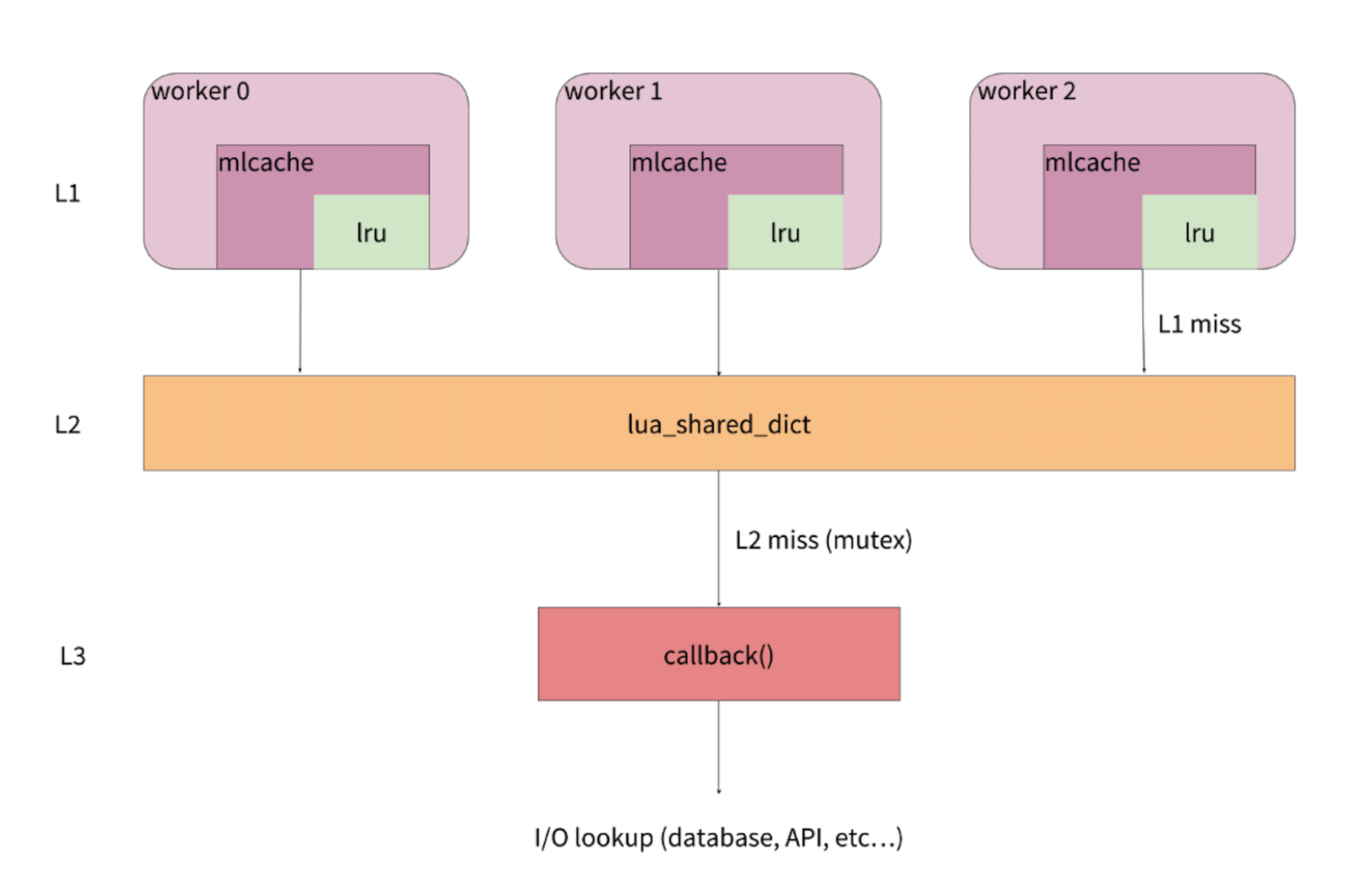
我的个人博客:https://www.luozhiyun.com/
数据结构table
table并没有区分开数组、哈希、集合等概念,而是揉在了一起。
local color = {first = "red", "blue", third = "green", "yellow"}
print(color["first"]) --> output: red
print(color[1]) --> output: blue
print(color["third"]) --> output: green
print(color[2]) --> output: yellow
print(color[3]) --> output: nil
table 库函数
获取元素个数
对于序列,用table.getn 或者一元操作符 # ,就可以正确返回元素的个数。
$ resty -e 'local t = { 1, 2, 3 }
print(table.getn(t)) ' # 返回3
不是序列的 table,就无法返回正确的值。
$ resty -e 'local t = { 1, a = 2 }
print(#t) ' #返回1
所以不要使用函数 table.getn 和一元操作符 # 。
我们可以使用 table.nkeys 来获取 table 长度,返回的是 table 的元素个数,包括数组和哈希部分的元素。
local nkeys = require "table.nkeys"
print(nkeys({})) -- 0
print(nkeys({ "a", nil, "b" })) -- 2
print(nkeys({ dog = 3, cat = 4, bird = nil })) -- 2
print(nkeys({ "a", dog = 3, cat = 4 })) -- 3
删除指定元素
第二个我们来看table.remove 函数,它的作用是在 table 中根据下标来删除元素,也就是说只能删除 table 中数组部分的元素
$ resty -e 'local color = {first = "red", "blue", third = "green", "yellow"}
table.remove(color, 1)
for k, v in pairs(color) do
print(v)
end'
这段代码会把下标为 1 的 blue 删除掉。
如果要删除哈希部分,把 key 对应的 value 设置为 nil 即可。
元素拼接函数
table.concat 以按照下标,把 table 中的元素拼接起来。只能拼接数组部分
$ resty -e 'local color = {first = "red", "blue", third = "green", "yellow"}
print(table.concat(color, ", "))'
使用table.concat函数后,它输出的是 blue, yellow,哈希的部分被跳过了。
插入一个元素
table.insert 函数,可以下标插入一个新的元素,自然,影响的还是 table 的数组部分。
$ resty -e 'local color = {first = "red", "blue", third = "green", "yellow"}
table.insert(color, 1, "orange")
print(color[1])
'
color 的第一个元素变为了 orange。当然,你也可以不指定下标,这样就会默认插入队尾。
优化
预先生成数组
预先生成一个指定大小的数组,避免每次新增和删除数组元素的时候,都会涉及到数组的空间分配、resize 和 rehash。
如:
local new_tab = require "table.new" local t = new_tab(100, 0) for i = 1, 100 do t[i] = i end
循环使用单个 table
table.clear 函数它会把数组中的所有数据清空,但数组的大小不会变。
如下:
local local_plugins = {}
function load()
core.table.clear(local_plugins)
local local_conf = core.config.local_conf()
local plugin_names = local_conf.plugins
local processed = {}
for _, name in ipairs(plugin_names) do
if processed[name] == nil then
processed[name] = true
insert_tab(local_plugins, name)
end
end
return local_plugins
local_plugins 这个数组,是 plugin 这个模块的 top level 变量。在 load 这个加载插件函数的开始位置, table 就会被清空,然后根据当前的情况生成新的插件列表。
table 池
lua-tablepool,可以用缓存池的方式来保存多个 table,以便随用随取。
local tablepool = require "tablepool"
local tablepool_fetch = tablepool.fetch
local tablepool_release = tablepool.release
local pool_name = "some_tag"
local function do_sth()
local t = tablepool_fetch(pool_name, 10, 0)
-- -- using t for some purposes
tablepool_release(pool_name, t)
end
缓存
OpenResty 中有两个缓存的组件:shared dict 缓存和 lru 缓存。前者只能缓存字符串对象,缓存的数据有且只有一份,每一个 worker 都可以进行访问,所以常用于 worker 之间的数据通信。后者则可以缓存所有的 Lua 对象,但只能在单个 worker 进程内访问,有多少个 worker,就会有多少份缓存数据。


shared dict
$ resty --shdict='dogs 1m' -e 'local dict = ngx.shared.dogs
dict:set("Tom", 56)
print(dict:get("Tom"))'
需要事先在 Nginx 的配置文件中,声明一个内存区 dogs,然后在 Lua 代码中才可以使用。
共享字典中还有一个 get_stale 的读取数据的方法,相比 get 方法,多了一个过期数据的返回值:
resty --shdict='dogs 1m' -e 'local dict = ngx.shared.dogs
dict:set("Tom", 56, 0.01)
ngx.sleep(0.02)
local val, flags, stale = dict:get_stale("Tom")
print(val)'
在上面的这个示例中,数据只在共享字典中缓存了 0.01 秒,在 set 后的 0.02 秒后,数据就已经超时了。这时候,通过 get 接口就不会获取到数据了,但通过 get_stale 还可能获取到过期的数据。
因为,在 shared dict 中存放的是缓存数据,即使缓存数据过期了,也并不意味着源数据就一定有更新。
lru 缓存
lru 缓存的接口只有 5 个:new、set、get、delete 和 flush_all。
如何使用:
resty -e 'local lrucache = require "resty.lrucache"
local cache, err = lrucache.new(200)
cache:set("dog", 32, 0.01)
ngx.sleep(0.02)
local data, stale_data = cache:get("dog")
print(stale_data)'
可以看到,在 lru 缓存中, get 接口的第二个返回值直接就是 stale_data,而不是像 shared dict 那样分为了 get 和 get_stale 两个不同的 API。
lua-resty-mlcache
lua-resty-mlcache用 shared dict 和 lua-resty-lrucache ,实现了多层缓存机制。
初始化:
local mlcache = require "resty.mlcache"
local cache, err = mlcache.new("cache_name", "cache_dict", {
lru_size = 500, -- size of the L1 (Lua VM) cache
ttl = 3600, -- 1h ttl for hits
neg_ttl = 30, -- 30s ttl for misses
})
if not cache then
error("failed to create mlcache: " .. err)
end
这段代码的开头引入了 mlcache 库,并设置了初始化的参数。第一个参数是缓冲名,第二个参数是字典名,第三个参数是个字典,里面是12个选填参数。
使用:
local function fetch_user(id)
return db:query_user(id)
end
local id = 123
local user , err = cache:get(id , nil , fetch_user , id)
if err then
ngx.log(ngx.ERR , "failed to fetch user: ", err)
return
end
if user then
print(user.id) -- 123
end
下面再看看这个库的架构与实现:

L1 缓存就是 lua-resty-lrucache。每一个 worker 中都有自己独立的一份,有 N 个 worker,就会有 N 份数据,自然也就存在数据冗余。
L2 缓存是 shared dict。所有的 worker 共用一份缓存数据,在 L1 缓存没有命中的情况下,就会来查询 L2 缓存。
L3 则是在 L2 缓存也没有命中的情况下,需要执行回调函数去外部数据库等数据源查询后,再缓存到 L2 中。
整体而言,从请求的角度来看:
- 首先会去查询 worker 内的 L1 缓存,如果 L1 命中就直接返回。
- 如果 L1 没有命中或者缓存失效,就会去查询 worker 间的 L2 缓存。如果 L2 命中就返回,并把结果缓存到 L1 中。
- 如果 L2 也没有命中或者缓存失效,就会调用回调函数,从数据源中查到数据,并写入到 L2 缓存中,这也就是 L3 数据层的功能。
需要做数据序列化的情况:
local mlcache = require "resty.mlcache"
local cache, err = mlcache.new("my_mlcache", "cache_shm", {
l1_serializer = function(i)
return i + 2
end,
})
local function callback()
return 123456
end
local data = assert(cache:get("number", nil, callback))
assert(data == 123458)
在 new 中,我们设置的 l1_serializer 函数会在设置 L1 缓存前,把传入的数字加 2,也就是变成 123458。
来源:https://www.cnblogs.com/luozhiyun/p/12284264.html